Empowerment and prospects of portable anti-tank systems
Demand for portable and portable anti-tank systems grew last year and continued to grow in the 2019 year, with many countries ordering a variety of systems. Among the most priority areas of development are ammunition and a decrease in the mass of launchers, since the efforts of the developers are aimed at improving the accuracy, range and fire efficiency, as well as the mobility of such systems.
The development of portable systems is largely determined by the growing need for work in settlements or melee conditions, as well as the approaching 2021 year with the removal of the first generation of the widespread anti-tank Javelin FGM-148 from service. In addition, more accurate ammunition with a greater range largely determines the boundaries of research and development activities in the field of man-portable ATGMs.
The process of refinement and modernization of ammunition, the creation of new types, as well as the reduction in the mass of sighting and launching equipment (BPPO) units is actively going on, as customers increasingly want smaller launchers that could be deployed in tight spaces.
Smart shot
A consequence of the great demand for increased accuracy and range is, for example, the Carl-Gustaf hand grenade launcher program, which is jointly implemented by Raytheon and Saab. The project is a response to the needs of the American Special Forces Command in a new guided shot for the Carl-Gustaf M4 and MH 84 mm caliber grenade launchers in an effort to increase the capabilities of their weapons for shooting from the shoulder. The Carl-Gustaf Munition semi-active laser homing system, introduced in October 2018 of the year, will increase the effective range of the system to 2000 meters. Demonstration of new technology for a select audience should be held this year. “We want to launch three grenades with semi-active homing at typical ranges,” said Mats Fagerberg of Saab’s US office. In September 2018, the U.S. Army issued a contract for the joint implementation of the project, under which three firing tests were planned for typical targets to be carried out in Sweden in 2020.
The advanced warhead of the grenade is designed to penetrate light armor, fortified shelters and concrete structures while reducing indirect losses. A new long-range grenade will allow firing at targets from buildings or buildings. Thus, it is well suited for close combat and hostilities in the city. According to Fagerberg, this is something that will be in great demand in the future.
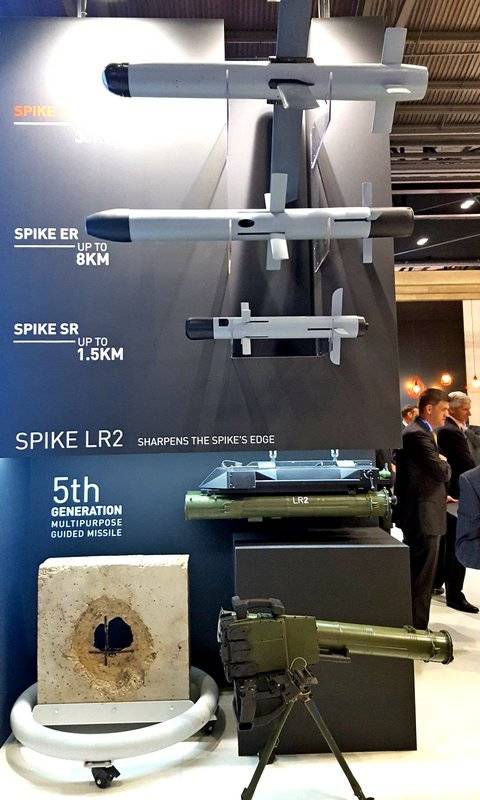
Saab is also developing a “smart” high-explosive fragmentation projectile that will allow full use of the intelligent elements built into the new Saab M4 BPPO version. This will allow the fuse to be programmed wirelessly using data from an integrated fire control system.
As the date of the decommissioning of the obsolete FGM-148 shot-and-forget system, which has been one of the main "workhorses" of the US military for many years, is steadily approaching, Raytheon continues to develop options for the FGM-148F and G with the aim of replace legacy systems. For a model with the G index, cost and weight reduction are just as important as increasing the probability of being hit. An uncooled homing head is installed in the rocket to improve the detection, recognition and identification of targets, as well as reduce the time of damage. The mass is reduced by removing the battery cooling unit and activating it as an external subsystem.
It is assumed that the contract for the production of the warhead will be issued in the 2021 year, which coincides with the timing of the cancellation of the FGM-148. “When Model G arrives in 2021, every single component of the system will be replaced,” said Dean Barten, project manager for melee systems in the US Army. “The entire system will be completely replaced, and although it still bears the name Javelin, it’s not the same Javelin that entered the troops in 1996.”
In addition, in May 2018, the U.S. military signed a contract to supply about 2000 new missiles in option F. This option was developed by Javelin JV, a joint venture of Lockheed Martin and Raytheon. The new universal warhead enhances the capabilities of the Javelin missile system in the fight against unarmored targets without compromising fire efficiency in the fight against traditional armored targets. “This warhead retains its previous firepower when working on armored vehicles, but in addition to this, we have increased power of action in the fight against infantry and unarmored vehicles,” said Barten.
During the tests of the rocket in option F, which took place in the 2016 year, there was no detonation of its warhead, and therefore the development and testing of the rocket at the beginning of the 2017 year were suspended. After the investigation, the tests were resumed in March 2017.
In developing the French Missile Medium Range missile, which is a further development of the Missile Systems MBDA Milan missile, the main focus was also on functional flexibility, low cost and accuracy. The MMP missile system is a response to the needs of the French army's programs - for FELIN combat equipment and for the modernization and integration of Scorpion armored vehicles.
MMR should reduce indirect losses in a complex combat space due to the operator’s work in the control loop and fiber optic channel. In addition, a navigation function is integrated into the rocket, which allows it to aim at a target outside the line of sight. In the modern information-centric space, these opportunities can be expanded by introducing the latest technologies.
As in the case of the Javelin FGM-148F complex, the universal warhead of the MMP missile can operate in two selectable modes: armor-piercing or concrete-slaughter. The developer expects that cost reduction is possible due to integration and excellent practical compatibility with other systems. MMP is only the first missile in the promising MBDA family of ground and air launch missiles. The missiles of the family will have a single-diameter hull and a common architecture that complies with the General Missile Architecture standard, which reduces development risks and minimizes cost.
Design impact
As the accuracy of missiles increases, and their radius of action increases, BPPOs are also being improved, especially in terms of reducing weight and improving sighting capabilities. In addition, during development, much attention is paid to lowering the cost of ownership, which is achieved, among other things, by increasing the level of compatibility of various systems, which gives the military additional advantages.
The BPPO of the FGM-148F and FGM-148G systems is being improved. Efforts to reduce weight and use modern technology, such as miniature electronics, are expected to increase the capabilities of missiles on the battlefield.
A Raytheon spokesman noted that the BPPO’s development is aimed at “enhancing capabilities and simplifying logistics ... In the case of light blocks, special attention is paid to reducing physical and cognitive load on the soldier. That’s why we make them easier, more compact and increase the guidance range. ”
As for Saab, the reduction in mass was a result of the reduction in size and the use of new materials. The new version of the Carl-Gustaf M4 grenade launcher began to weigh 7 kg, while the previous version of the MZ weighs 10 kg. According to Fagerberg, this was achieved through "the use of titanium for facing the barrel and the Venturi nozzle (in the previous versions there was steel), as well as the introduction of an improved carbon fiber casing into the design, while the launch tube became shorter." Another difference from the MOH is that the M4 grenade launcher operator can adjust the front handle and shoulder support, as well as carry it charged. Different types of sights are available for the system: mechanical, collimator, telescopic and intelligent.
Saab also hopes to make the Carl-Gustaf M4 more accessible and cost-effective for customers through its “readiness for future programmable ammunition” (several types of shells are being developed), but at the same time maintain full compatibility with existing Carl-Gustaf grenades. The current kit includes four armor-piercing shells, four universal or concrete-piercing shells, three anti-personnel shells, smoke and lighting. In addition, there are two types of 84-mm practical grenades and training ammunition of the 20 mm and 7,62 mm caliber.
- explained Fagerberg.
The increased range and reduced weight are also integral characteristics of the Indian MPATGM ATGM (Man-Portable Antitank Guided Missile). The Indian Defense Research and Development Organization announced the successful test launches of the MPATGM rocket, carried out for the second time in March 2019, at a training ground in the Rajasthan desert. According to the Indian Ministry of Defense, all the tasks set during the tests were completed, the missiles accurately hit the intended targets from different distances.
The flight range of the rocket is from 200 to 2500 meters, it can be fired in the cold start mode from enclosed spaces. The MPATGM complex weighing 14,5 kg is distinguished by a missile with an advanced thermal thermal imaging seeker and an integrated electronic control unit, as well as a removable BPPO.
Saab believes that the renewed emphasis on hostilities in the settlements means that the addition of a guided projectile to Carl-Gustaf's portfolio is completely logical and timely.
- said Fagerberg.
A spokesperson for Rafael agreed with this statement:
Tailor-made
Demand over the past year or two for portable weapons systems has grown significantly, as evidenced by the numerous orders placed by the armies of many countries.
The Javelin JV joint venture received a $ 2018 million contract in July 307 to modify its weapons system and sell it to Australia, Estonia, Lithuania, Taiwan, Turkey and Ukraine. In February 2019, the Lithuanian Ministry of Defense announced additional missiles purchased for Javelin anti-tank systems.
In addition, at the end of 2018, Carl-Gustaf grenade launchers were purchased by Latvia and Slovenia, as well as ordered by another unnamed country. At the end of last year, Saab also sold the US Army's Carl-Gustaf M4 grenade launchers worth 19 million dollars. Deliveries of the M4 variant under the designation MZE1 began at the beginning of 2019 and will last three years.
In July 2018, the company also received an order to supply the army with additional AT4 Confined Space Reduced Sensitivity (CS RS) anti-tank systems. “Saab AT4 CS RS is designed primarily for urban environments and the jungle. We believe that in the future the significance of hostilities will only grow. In urban environments, it is imperative to be able to fire from confined spaces, which is why the AT4CS is so popular in the market, ”explained Fagerberg. “The need for even more accurate weapons systems will only grow, not only in order to capture and hit targets at increased ranges, but also to eliminate the risk of indirect losses at short range. Our engineers look at how to improve systems for future combat missions, and increased accuracy is one of the important elements in the development of such systems.
The AT4 disposable light grenade launcher, which is an auxiliary system designed to combat armored targets, is carried on the back of a soldier and, if necessary, can be quickly prepared for firing. In May 2018, the United States also officially approved the sale of 210 missiles and 37 launchers to Ukraine for a total of about 47 million dollars.
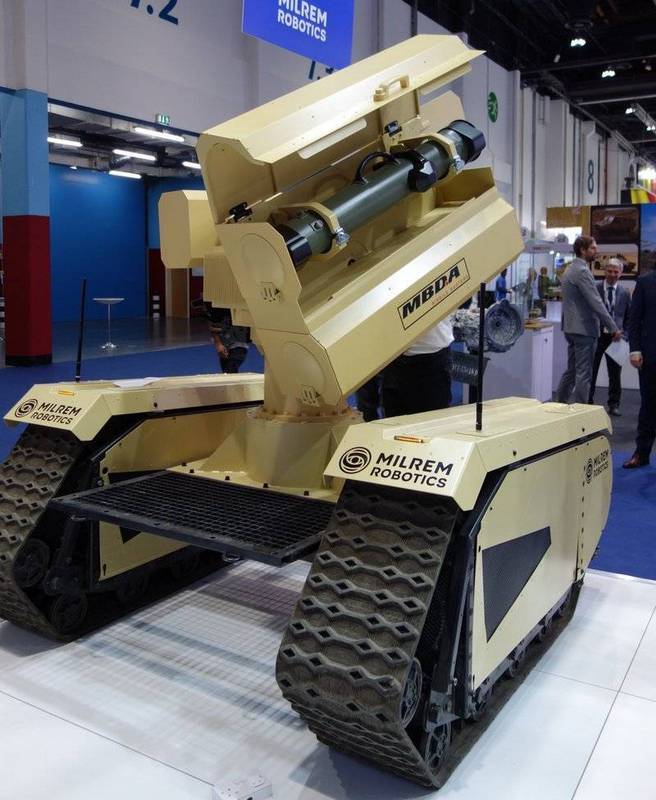
Integrated solutions
Equally important is the ease of installation and integration of weapons systems into large platforms, in which the armies of a number of countries have succeeded significantly today.
For example, Javelin systems were installed on the Stryker armored vehicles of the American army. The first batch of Stryker Infantry Carrier Vehicles -Dragoon platforms was delivered to the 2 Reconnaissance Regiment, based in Germany. A company spokesman commented on this: “The manual configuration or the portable configuration of the rocket really does not differ ... this allows you to use the Javelin weapon system in a more flexible form."
In March, Australian Electro Optic Systems (EOS) 2019 introduced its T2000 tower, which was created for the global market and is currently being offered for three programs, one of which is the Australian Land 400 Phase 3.
The tower is equipped with two Rafael Spike LR2 ATGMs in a retractable launcher, which is protected by armor, while Javelin missiles can be installed in it. The Spike LR2 missile, compatible with previous versions, can be equipped with a tandem cumulative warhead, the armor-piercing capabilities of which are increased by more than 30%, or the new universal high-explosive fragmentation warhead with a remote fuse.
- added a representative of EOS.
Initially, the tower will be manufactured in Canberra, its production will begin at the end of 2019 year. EOS is currently choosing a site for the new plant among several options, including the states of South Australia and Queensland.
As part of the Australian Land 400 Phase 2 project, the Boxer Combat Reconnaissance Vehicle (CRV) 8x8 will be equipped with Rafael Spike LR ATGMs in addition to Kongsberg weapon modules (vehicles in Block I version) and EOS (vehicles in Block II version) and an active complex protection. “Spike ATGM, like all other subsystems for the Boxer, is undergoing an examination as part of the Land 400 Phase 2 project. These examinations are carried out in accordance with the expectations of the Department of Defense and agreed with the company Rheinmetall schedule, "- said the representative of the Ministry of Defense of Australia. First deliveries are expected in 2020, and their completion in 2026.
ATGM Spike has already been integrated into 45 different platforms. This accumulated data will enable Rafael to assist Rheinmetall and simplify the integration of the Spike LR2 into the Lance Tower. In addition, the Spike LR1 is already integrated and qualified for the Lance turret mounted on the German army's Puma BMP, which will allow for the trouble-free integration of the LR2 missile into the vehicle’s weapons complex.
Alternative platforms
As with the Australian Boxer armored vehicle program, the Romanian Ministry of Defense is also looking to increase the firepower of the Piranha V 8x8 wheeled armored vehicle manufactured by General Dynamics European Land Systems. It will be armed with a coaxial 7,62-mm machine gun and a launch container with two ATGMs. However, the Romanian military has not yet chosen their ATGM.
Finally, the Turkish company Roketsan developed the Mizrak-O or OMTAS medium-range anti-tank guided missile in order to meet the needs of the Turkish army in ATGMs, which could be used in a hurry version, as well as launch from a machine. This program is part of the project on a mobile anti-tank complex, which is currently being implemented; Pars 4x4 with Mizrak-O missiles was recently introduced before qualification testing.
Mizrak-O has a valid range from 200 meters to 4 km and can be launched day and night in the following modes: “shot-forgot”, “shot-performed correction”, target capture before launch, target capture after launch, direct attack and attack from above . The tandem warhead is equipped with an infrared homing head and can hit heavily armored vehicles. In urgent operations, a rocket weighing 35 kg is launched from a tripod weighing 36 kg, which includes an aiming module with day and thermal imaging cameras.
In July 2018, Roketsan completed the qualification of the OMTAS missile production line and its readiness for serial production. In January 2019, a contract was announced between Roketsan and Aselsan for the supply of an unnamed number of infrared seekers for OMTAS missiles, scheduled for 2019-2024 years.
In the future, anti-tank systems of this type may well be integrated into uninhabited platforms. For example, at the IDEX 2019 exhibition, Milrem Robotics' THEMIS Remote Controlled Vehicle (DUM) was shown with an IMPACT (Integrated MMP Precision Attack Combat Turret) rig, armed with two fifth-generation MMP missiles and a machine gun. This all closely resembles the situation with the Russian multi-purpose robotic complex Uran-9, designed to carry out counter-terrorism and combat missions. In the basic configuration, the car, introduced in 2016, is equipped with ATRA ATGM.
The advantages of the SUM are obvious - the soldier’s safety is enhanced, since using a wireless and wired connection, it can be deployed from a safe distance. In the THeMIS MMP configuration, the system will have low thermal and acoustic signatures, so the platform can remain invisible during the task. “This combination of the two most modern technologies is a very good demonstration of how in the future robotic armed systems will bring about disintegration on the battlefield and make some traditional technologies obsolete,” said a spokesman for Milrem Robotics.
He added. However, there are currently no customers for the THeMIS armed platform.
As modern armies see uninhabited systems as a means of improving the security of their soldiers and as a factor in increasing combat capabilities, anti-tank guided missiles are likely to have bright prospects and sustainable development in the future.
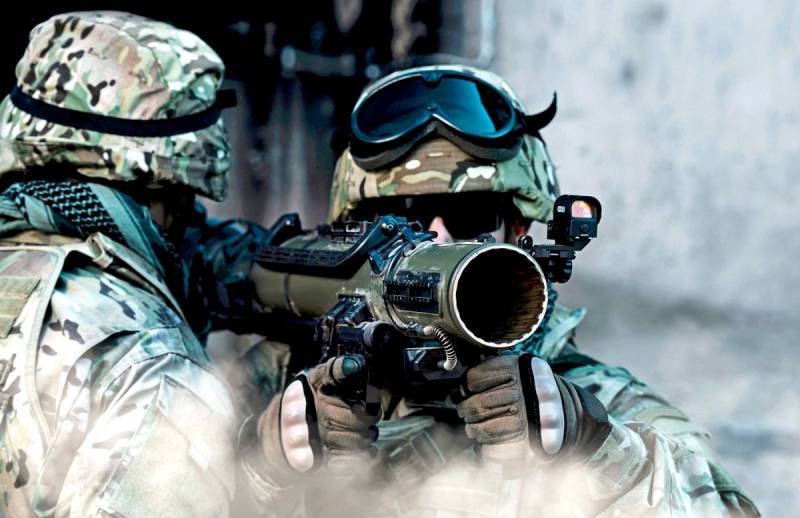
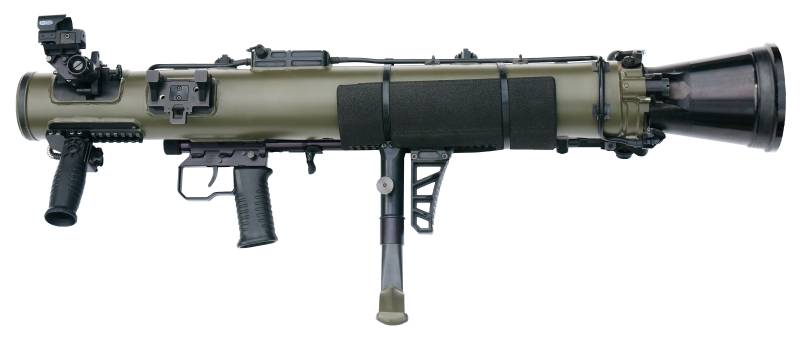
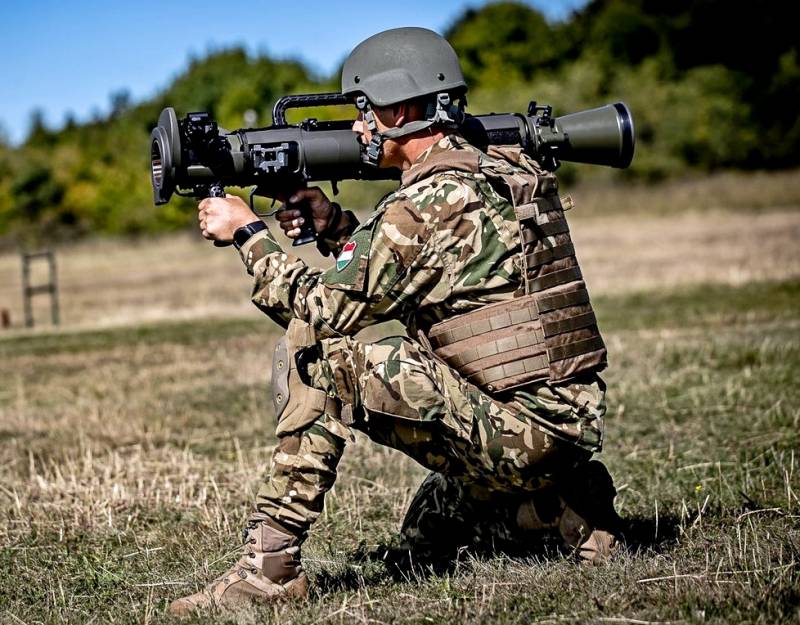
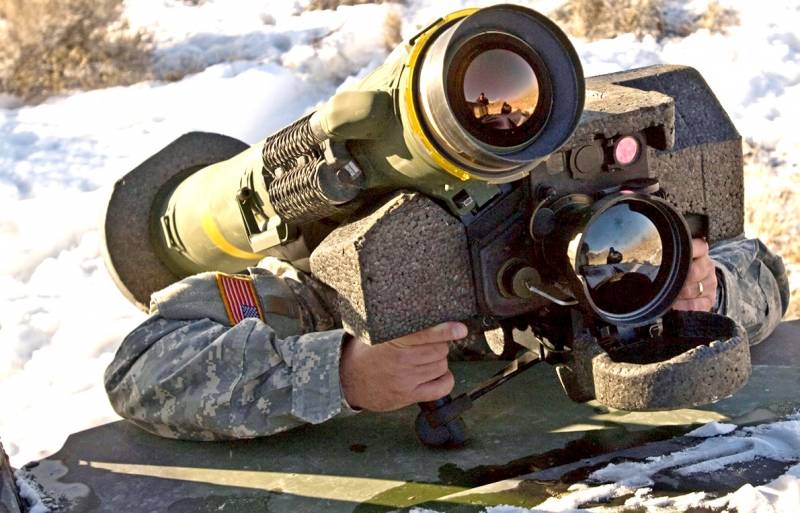
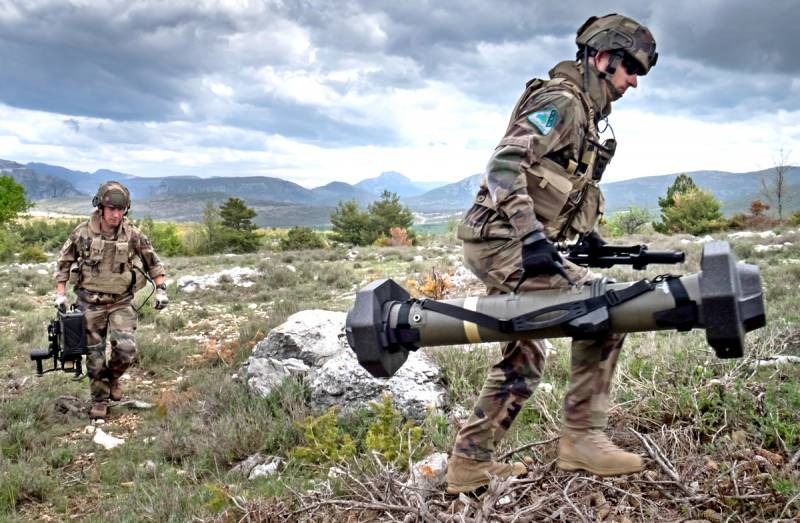
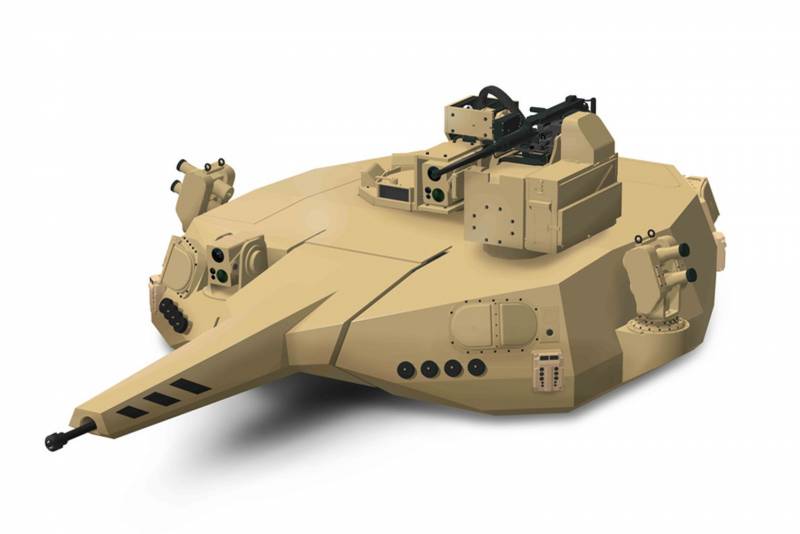

Information